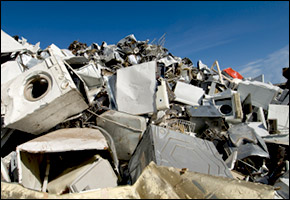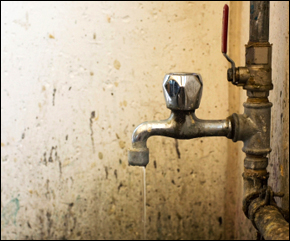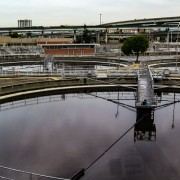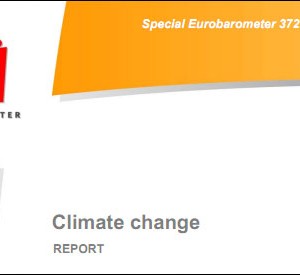Peter Gleick: Why Spend Public Money for Private Bottled Water?
When I go to water meetings, there are serious scientific discussions about climate impacts on water systems, international conflicts over water, water quality and contamination threats, new technologies and strategies for providing basic water and sanitation for the world’s poor, and much more. But in the hallways between meetings and sessions, the real arguments are about the conflicts between public and private control and management of water.
One of the key issues in this debate these days isbottled water. We’re in what I think of as Phase 3 of the bottled water debate. In Phase 1, no one drank bottled water except for specialty mineral waters. In Phase 2, the use of bottled water exploded as people (1) became fearful or uncertain about their tap water, (2) were bombarded with sophisticated marketing and advertising touting the benefits of this or that brand of bottled water, and (3) found it easier and easier to find commercial bottled water and harder to find a clean working drinking water fountain.
We’re now in Phase 3, with a growing consumer backlash against bottled water. People are more aware of the high environmental and, especially, economic costs of bottled water, which costs 1000 to 2000 times more than the same quality tap water. And there is a growing movement of universities, restaurants, municipalities, and even states to stop buying bottled water, especially when tap water is available.
The latest state battleground is Maryland, which is pushing for a policy to stop state government spending on bottled water when tap water is available in order to save money and reduce waste. Governor Martin O’Malley endorsed the policy last week. The new policy, put forth by the Maryland Green Purchasing Committee, says that state funds “should not be used to purchase bottled water for use in facilities that are served by public water supplies or potable well water, except when required for safety, health or emergency situations.”
Note, carefully, what this policy does and does not do:
• It does say that state funds should not be used to buy bottled water when tap water is available.
• It does not ban bottled water or restrict consumer choice: anyone can buy their own.
The opposition of the bottled water industry to this policy is not a surprise, but their logic is astoundingly self-serving and twisted, and their public statements are gross misrepresentations of the Maryland policy. A statement from the International Bottled Water Association issued October 6th says:
“The recent announcement by Governor O’Malley endorsing the restriction of access to bottled water by Maryland state employees is disappointing.”
This, of course, is false. The policy does not restrict access to bottled water — Maryland state employees can buy and have all they want. It says the government shouldn’t pay for it. Rich Norling of the Maryland Green Purchasing Committee was explicit, “We are not restricting access to bottled water. We’re just not paying for it.” The IWRA statement goes on to say:
“it is unfortunate that the state has opted to single out healthy, safe and zero-calorie bottled water.”
This is also false. In fact, before this policy, the state was singling out bottled water as the only commercial beverage they were buying for employees. The new policy actually puts bottled water into the same position as any other commercial beverage. The state already doesn’t pay for soft drinks, fruit juices, beer, milk, or any other beverage. Why should they have been paying for commercial bottled water? All Maryland is doing is saying, “Hey, why are we treating bottled water as special? Let’s stop paying for it.”
And next, IBWA says:
“Removing bottled water as an option does not automatically drive people to drink tap water.”
This is also a mischaracterization: As noted above, Maryland is not removing it as an option. state employees and guests are free to buy their own. And the purpose of the policy is not to “drive people to drink tap water.”
And next IBWA says:
“According to peer-reviewed consumer research, and demonstrated through testing in Toronto, Canada schools, if bottled water is not available, only one-third of people seek out tap water, while two-thirds instead choose packaged beverages that add calories or sugar, or both, to their diet.”
Hmm, I could not find this “peer-reviewed” research (and I’d like the IBWA to send it to me — I couldn’t find it on their website, or in Google Scholar). And even if this is true, it is not a reason for the State of Maryland to subsidize bottled water for its employees. If the state were to do this, why not subsidize all other lifestyle choices that might improve diet, or health? Like salads at the lunch bar? Or my membership at the gym? And even if they did this, why subsidize a commercial product when the exact same product is available from the tap?
I could go on. The other arguments made by the IBWA are equally specious. There is no reason States or municipalities should be paying for bottled water when tap water is available; and indeed, when tap water is not available, states and municipalities must make it available – and still not buy bottled water. It costs more, it has environmental challenges associated with its use of energy, generation of waste, and impacts on some local groundwater, and it turns a public resource into a private commodity, as I discuss in my book Bottled and Sold: The Story Behind Our Obsession with Bottled Water.
This isn’t a “ban.” It is putting consumer choice back in the hands of the consumer, not the government.
Peter Gleick
Originally published by Huffington Post on October 6, 2011.









I was at a water-related conference in New Jersey some years ago and in the facility I found all the water fountains vandalized or posted with “out of order” signs. Numerous venders were there selling bottled water at 2x the normal price. Did I think there was a relationship between the price of bottled water and the lack of public fountains? You bet.
On a recent trip to Switzerland I found public fountains and places to fill your water bottle in every public square in even the smallest towns.